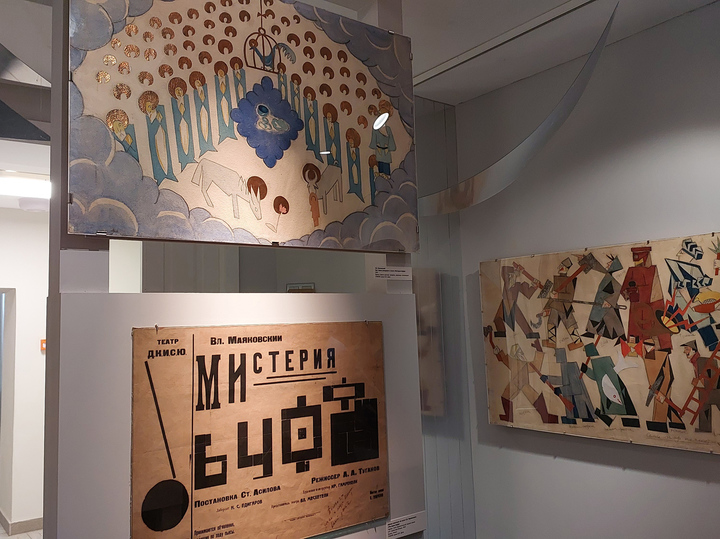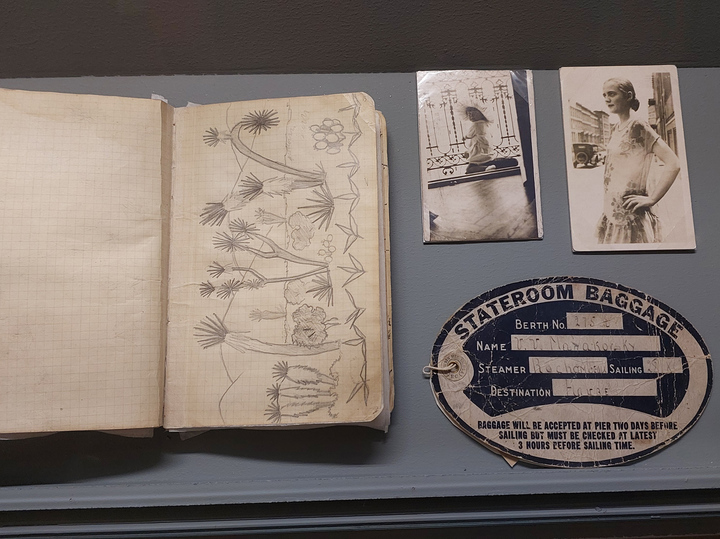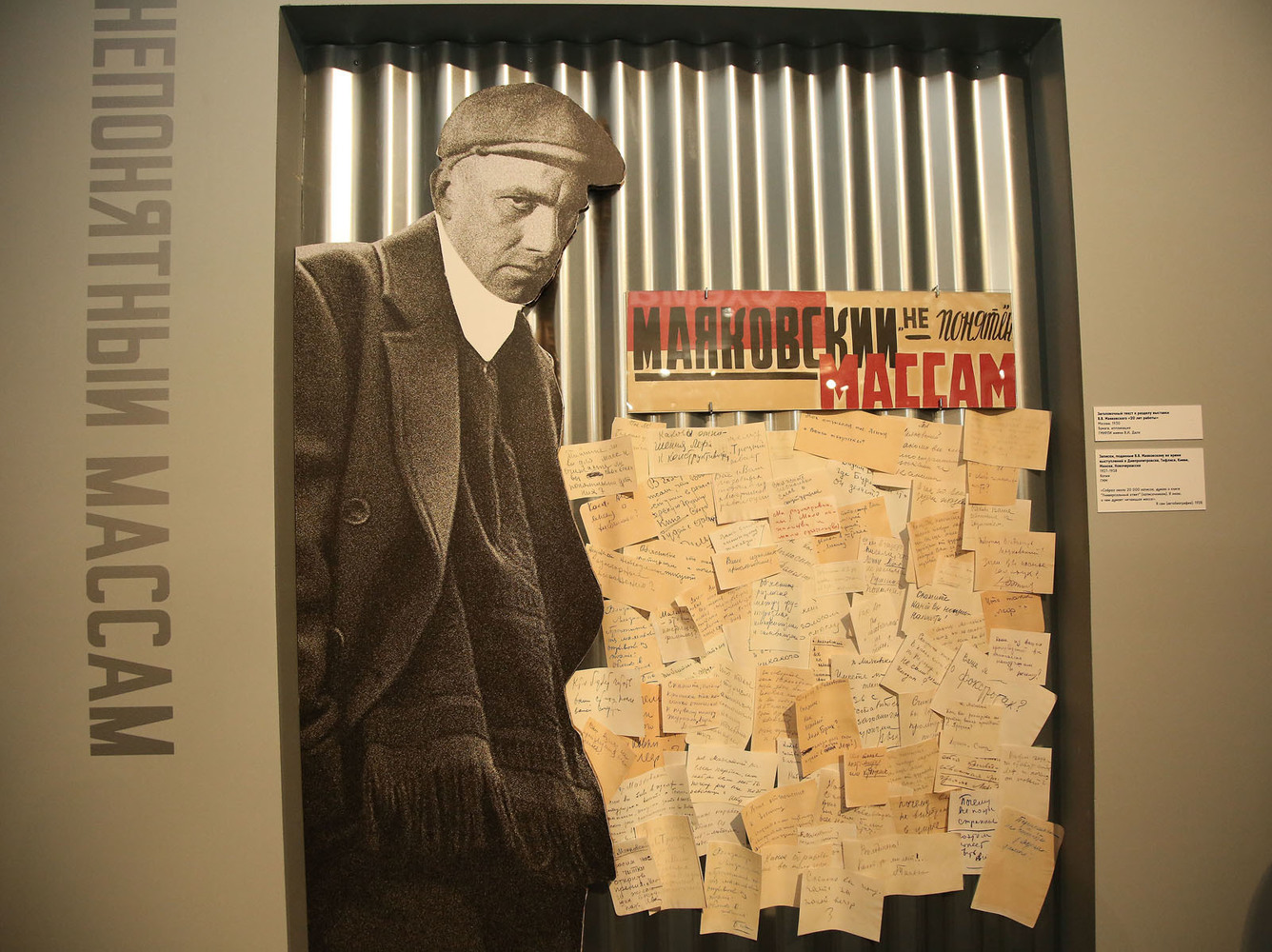Mayakovsky and Lily Brik’s rings “turned” into a cat: mysticism at an exhibition dedicated to the poet
[ad_1]
On the eve of the official opening, directors of literary museums gathered to celebrate the date. And they said that Mayakovsky lived for less than 37 years, passed away almost 100 years ago, but still remains a relevant poet. He was called the creator of domestic advertising, recalled the difficult relationship with the authorities, Lenin’s rejection of him and the choice in favor of death in 1930, which led to a “web of contradictions.” He seemed to foresee his departure in a poetic epitaph on the departure of Yesenin in 1925.
The name of the exhibition repeats the poet’s article of the same name “About different Mayakovskys” of 1915, where he calls himself an impudent and cynic, a cab driver and an advertiser.

The director of the GMIRL named after V.I.
Mayakovsky! It cannot be invented, it cannot be repeated. Try to read “I remember a wonderful moment” with a ladder. These will be other poems, ”Bak said temperamentally and tried it himself, read it.
He gave the floor to the new director of the Mayakovsky Museum, who had just taken up the post: “Apparently it is so predetermined from above that Vladimir Vladimirovich Lisenko is in charge of the Vladimir Vladimirovich Mayakovsky Museum.”
Lisenko assessed the exhibition as follows: “The abundance of monuments, busts, heads of the great poet and citizen reflect Vladimir Vladimirovich, petrified in bronze and metal. And the exhibition shows him – a real man of his era, who was alive and spontaneous in all his manifestations.
Larisa Alekseeva, head of the department at the Museum of the History of Literature of the 20th Century and curator of the exhibition, is sure that Mayakovsky is not out of date at his hundred and thirty. It is still read and listened to, carried away by its powerful energy. Who could he be today? Rapper, advertiser, designer, street artist, millionaire blogger… Anyone.
Nine images of the poet, drawn from his own poetry, form the composition of the exhibition space. It begins with “priceless words of a spendthrift and spender”, “impudent in a yellow jacket”, and ends with a poet “incomprehensible to the masses”. Between them there are several hypostases: “not a man, but a cloud in his pants”, “a flying proletarian”, “man-dweller”, talking to the Eiffel Tower, “Budetlyansky strongman and New Noah”, “not born for money”, “a man of great GROWTH”, “puppy”, “producing happiness”. Archival materials coexist with modern installations. In total, about 300 items are presented – posters, manuscripts, photographs, sketches of costumes and scenery for the Mystery Buff, personal items.

Rarely exhibited gold signet rings, which Mayakovsky and Lilya Brik exchanged in 1918, attract attention. They were made by order of the poet. On the signet of the small ring, the letters “LOVE” go in a circle, so that the word “love” is read. The name “Volodya” is engraved on the inner circumference, and “Lilya” is engraved inside a large ring with the poet’s Latin initials.
Below the rings is a tiny photo of the couple, taken in Petrograd in 1915. As museum staff say, when creating exhibitions, mystical things happen by themselves. When the rings were put up in the window, a shadow formed in the form of a cat – ears on the top of the head, eyes. Lilya Brik, as you know, signed her letters to Mayakovsky: “Your Kitty.” Mayakovsky wrote in response: “Your Puppy.” Here is Tyshler’s paired portrait “Love” of 1954, made in pencil, Brik’s photograph of Petrograd, 1916, her own portrait, made by Mayakovsky in 1915-1916 in an album with drawings.
Among the rarities are Mayakovsky’s notebooks with the addresses of friends, drawings, fragments of the poem “Out loud”, drafts of the poem “Revolution. Poetochronika” 1917. Of the 70 notebooks kept in the Mayakovsky Museum, 7 are presented at the exhibition.

In the space where Mayakovsky is presented as New Noah and Budetlyansky strong man – two tiny drawings of 1913. These are “The Man” by Mikhail Larionov and a sketch of the costume “The Strongman of Budetlyansk” by Kazimir Malevich for the opera “Victory over the Sun”. They are projected onto the wall, enlarged. Both characters are associated with Mayakovsky. There are also Mayakovsky’s sketches of scenery for “Mystery Buff”. A separate conversation about his work in the cinema, Mayakovsky as a screenwriter.
Larisa Alekseeva says that the poet was a gambler, loved to play cards, bet on horse races. For the “not born for money” money has become an important component. Confirmation of this is the outline of the poem “A Conversation with the Financial Spectator about Poetry”, the autograph of the poem “An Answer to Future Gossip”.
Mayakovsky was asked how much he gets for his lines, whether he really bought a car. And he replied: “Well, please forgive me that I brought Renault from Paris, and not perfume and not a tie.”
Traveling in France, he wrote notes of a ogre – this is how he called himself in the poem “The Flying Planetarium”. Mayakovsky traveled a lot around the world, and a separate section of the exhibition is dedicated to his travels of 1922-1929. Personal items purchased abroad are on display: a leather folder for papers with the poet’s initials, fountain pens – American “Parker” and German “Montblanc” yellow with a monogram, American and French ties made of silk and rep, Austrian felt hat.
In Paris, he shopped with Elsa Triolet, who recalled buying shirts, ties, socks, pajamas, a leather sash, a rubber collapsible shower basin, suitcases with clasps to adjust its depth, travel accessories, a fork in a leather case. As Triolet noted, these are “things that Mayakovsky needs” for his trips around Russia.
The lines of the poet “I feel like a Soviet factory” correspond to the space of socialist construction. Above our heads is something like a laboratory of verse. Since a man is a factory, then in addition to production, advertising is also needed. The section begins with a registration card that was brought in when Mayakovsky was arrested for participating in revolutionary activities. They made a description of him: he looks 17-19 years old, the neck is thin, the ears are protruding, the step is wide.
But he is already working at the ROSTA Windows. The process of creating a poster is shown, you can see miraculously preserved stencils, with the help of which replication was carried out. On a rainy day, posters advertising rubber products attracted particular attention: “It’s raining rain for nothing, I won’t go out without galoshes. With the help of Rezinotrest, I have a dry place everywhere.” With a postscript – “Sale everywhere.” On the sole is an image of a sickle and a hammer. This part of the space ends with the portrait “V.V. Mayakovsky in the ROSTA workshop” by Alexander Deineka, created for the exhibition dedicated to the 10th anniversary of the poet’s death.
“Incomprehensible to the masses” – also Mayakovsky. Some idolize him, consider him ahead of his time. Others do not understand, they are interested: “Why are you writing this?”, “Why are you not a party member?” Mayakovsky collected about 20 thousand notes and prepared a universal answer. Next to the notes that can be read is his original sign “Mayakovsky is incomprehensible to the masses” from the exhibition “20 years of Mayakovsky’s work.” From a distance, only the words “Mayakovsky to the masses” are read, and “incomprehensible” is given in quotation marks and in small print. No matter what they say, he knows what is needed. It is he who produces happiness for his country.
The exhibition ends with an installation related to Mayakovsky’s last drawing. Here the visitor can sit and think about what he saw.
[ad_2]
Source link







